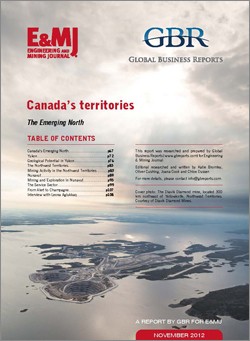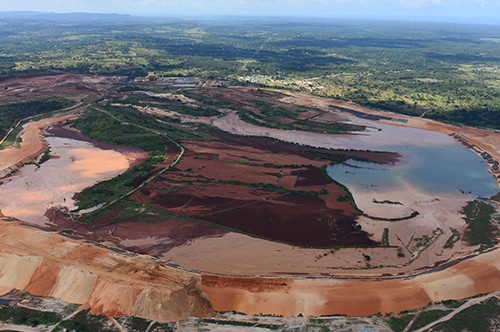
PUBLICATION
Canada's Territories Mining 2012 E&MJ Release
Canada’s territories, comprising of Yukon, the Northwest Territories and Nunavut, provide grand opportunities and prospects for those willing to challenge one of the world’s harshest climates. The Canadian government has targeted resource development, particularly in Canada’s territories, as a key priority. Conservative Canadian Prime Minister Stephen Harper’s Economic Action Plan 2012 for Resource Development has vowed to open up the North. In 2011, diamond production was up by $40 million over 2010 in the three Canadian territories, while tungsten production increased by $55 million from 2010 to 2011. In the Northwest Territories, mining’s contributions, led by diamond production, exceeded all other private sector contributions to the territorial GDP, accounting for 29%. The sole mine currently in production in Nunavut already accounts for 15% of the territorial GDP. Exploration expenditure, even in today’s sensitive market, is set to increase by $20 million in the Northwest Territories. Nunavut currently has eight potential mines that could develop in the foreseeable future, with the Northwest Territories containing a potential six. The Yukon still appears as the North’s most developed mining destination, with over 100 years of mining experience, an infrastructure supporting its most developed areas and the country’s highest rate of growth.
While the market may not be at its peak, the future of commodities and continued demand is extremely promising and this first report on Canada’s territories provides a timely opportunity to explore the potential opportunities for development as well as the key factors to the success of Canada’s ‘last elephant county’, including its reliance on the current state of the junior market, the level of mapping and geophysical information available and engagement with the aboriginal groups.













